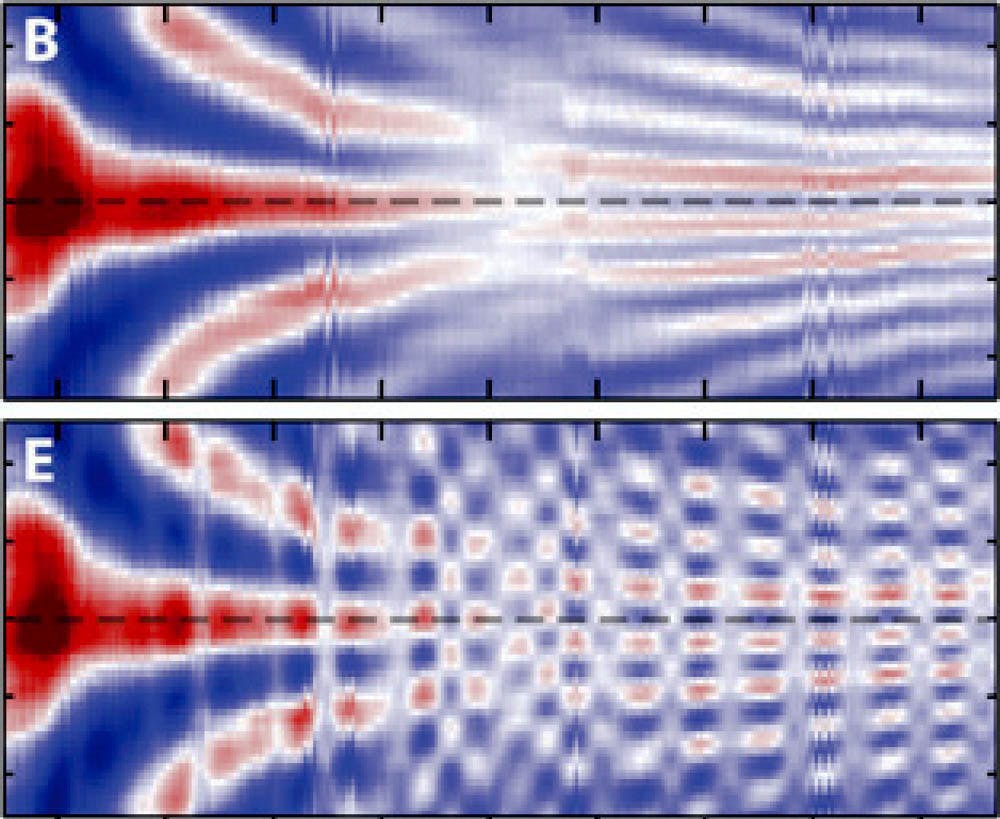University researchers recently demonstrated a method to significantly modify the spatial coherence of light. The results could offer more options for the manipulation of light in nanotechnology, and may even allow researchers to improve communication via lasers.
One of the fundamental properties of light is coherence, which determines the color of light, how it propagates and how it scatters, said Taco Visser, professor of theoretical physics at Vrije Universiteit Amsterdam. The modulation of light coherence can therefore be conceptualized as a tool to tune its other properties, he explained.
The coherence of light is typically measured by using Young’s famous double slit experiment, said Domenico Pacifici, associate professor of engineering and physics and co-author of the study. This experiment involves sending light through an opaque barrier with two slits and projecting it onto a screen on the other side.
If the light hitting the barrier is coherent, the rays exiting the slits interfere with each other and produce strong, dark and bright bands — called intensity fringes — on the projection screen, Pacifici said. But if the light hitting the barrier is incoherent, no intensity fringes will be produced. “The visibility of these fringes is a direct measure of the degree of coherence of the (light hitting the barrier) at the two slit locations,” he said.
University researchers transformed Young’s double slit experiment into a mechanism to modulate the coherence of light. They replaced the opaque barrier in the original experiment with a thin metal film, so the light would interact with the electrons in the metal. Light hitting the slits in the metal film generated a special type of wave supported by oscillations of electrons within the metal, Pacifici said. The waves “propagate along the metal surface and move toward the other slit, where they mix with the (incoming) light vibration,” he said.
As a result of this mixing, the incoherent light hitting the two slits becomes partially coherent, Pacifici said. This is on account of the surface plasmon waves, which act as a communication channel. Light exiting the slits is now coherent and can produce interference fringes, he added.
By increasing the strength of the surface plasmon waves, the researchers achieved strong modulation of the coherence of incoming light. “We were able to turn totally incoherent light into highly coherent light, and vice versa,” Pacifici said.
These findings lend themselves to a range of applications. One is space optical communication, which uses lasers to broadcast information through the atmosphere over long distances, said Greg Gbur, professor of physics and optical science at the University of North Carolina at Charlotte. However, the atmosphere’s tendency to distort light has always been a problem. As a result, “the information gets scrambled if you try to transmit over a long distance,” he said. If you adjust the spatial coherence of light, you can reduce the amount that the atmosphere distorts the light, Gbur added. Modifying the coherence of light can therefore be salient to the production of laser beams in these communications.
The research is also relevant to nanotechnology: In many detectors working on a very small scale, light can be sent in different directions by altering its coherence, Visser said.
The distinguishing feature of this study is undoubtedly the degree of changes in light coherence that the researchers were able to achieve.
The paper “demonstrates that you can get really large changes in coherence,” Gbur said. This is “something that wasn’t demonstrated before experimentally,” he added.
“It certainly is a record,” Visser agreed.





